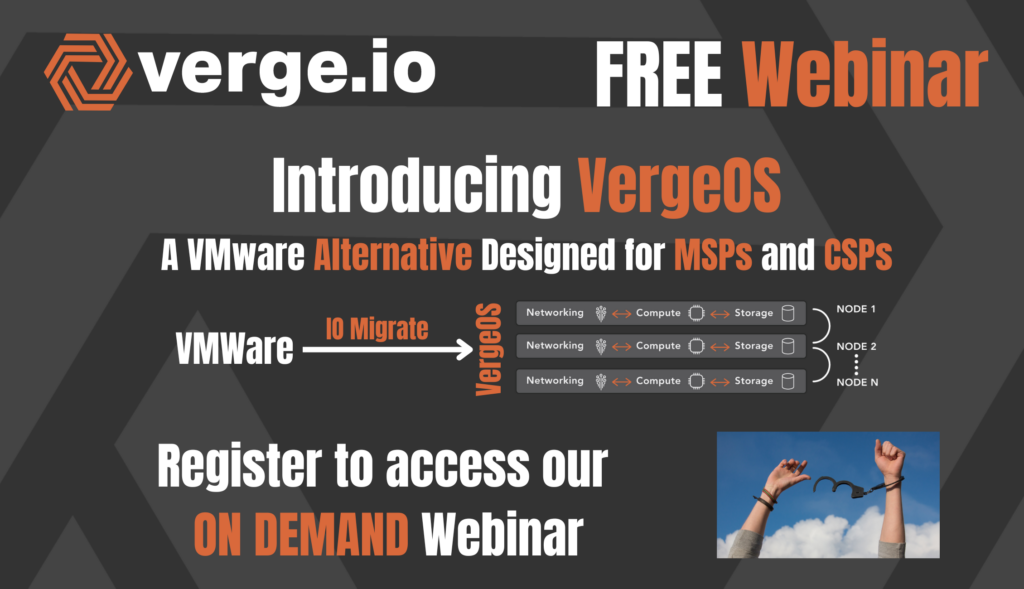Managed Service Providers (MSPs) and Cloud Service Providers (CSPs) constantly navigate a rapidly evolving technological landscape under pressure to lower costs. Their success hinges on their ability to streamline operations, improve responsiveness, and enhance efficiency. Here, we explore essential best practices that MSPs should consider as they revolutionize their infrastructure.
Modernized Infrastructure Software
Modernized infrastructure software is critical for MSPs to meet contemporary challenges. This software should combine virtualization services delivered via a hypervisor, storage, networking, and cloud services like multi-tenancy. By integrating these elements, MSPs can achieve efficiency, scalability, and security across numerous customers. The traditional three-tier architecture is expensive, both to buy and operate.
Maximizing Server Longevity
MSPs must maximize the useful life of their hardware to ensure a better return on investment. This requires infrastructure software with low overhead, leaving more compute resources available for customer virtual machines (VMs). Mixing different server brands, processor generations, and storage configurations within the same infrastructure is even more crucial as it ages. Software should be abstracted from the hardware, supporting configurations like CPU-heavy or storage-heavy nodes. True abstraction also eliminates obsolescence. If infrastructure software forces MSPs to retire servers before they are ready, it is because the software is not genuinely abstracted from the hardware.
Ensuring Resiliency
Infrastructure software resilience is vital, especially as servers age and customer count grows. MSPs need solutions that go beyond single points of failure and instead incorporate multiple points of redundancy. This allows aging servers to run until failure with minimal disruption. The infrastructure can survive multiple simultaneous drive or server failures without impacting customers’ operations.
Enhancing Data Center Density
Successful MSPs face the challenge of building highly compact data centers to lower the cost of data center footprint and reduce power and cooling expenses. The goal is to maximize the number of VMs per physical host without compromising performance. This requires infrastructure software that doesn’t burden CPU resources, protects against disruptive ‘noisy neighbors,’ and has a cost-effective server-based licensing model instead of licensing per processor or core.
Fostering Security
Security is paramount for MSPs. They must protect their environments from threats like ransomware while ensuring rapid recovery. The fear of an attack has been so great that many MSPs use multiple solutions that provide the same protection. This approach increases costs and complexity. Moving away from multiple-point solutions to an infrastructure-wide approach resilient to attacks is essential. This includes capabilities for limiting attack surfaces, detecting attacks quickly, and recovering effectively.
Key Features to Look for in Infrastructure Software
When selecting infrastructure software, MSPs should look for solutions that:
- Integrate Services: Ensure the software combines virtualization, storage, networking, and cloud services for seamless operations.
- Support Diverse Hardware: The software should be portable and support a mix of server brands, CPU generations, and storage types within the same instance.
- Enhance Resiliency: Look for high availability and redundancy features to protect against multiple drive and server failures and maintain operational continuity.
- Optimize Density: Choose software with a licensing model that supports dense server configurations without financial penalties and provides mechanisms to manage ‘noisy neighbors.’
- Ensure Security: Prioritize software that includes multi-factor authentication, read-only OS installations, isolated virtual data centers, and advanced alert mechanisms to swiftly detect and recover from attacks.
- Easy Migration: Moving from one infrastructure software to another can be time-consuming, and the chance for error is high. Look for integrated migrations that can seamlessly migrate entire environments within minutes while providing failback checkpoints.
Conclusion
MSPs can revolutionize their infrastructure by adopting these best practices. Emphasizing modernized infrastructure software, maximizing server longevity, enhancing data center density, and ensuring robust security measures will enable MSPs to navigate the technological landscape’s challenges effectively. By selecting the right infrastructure software, MSPs can achieve integrated, efficient, and resilient operations while dramatically lowering costs.
By George Crump, VergeIO















